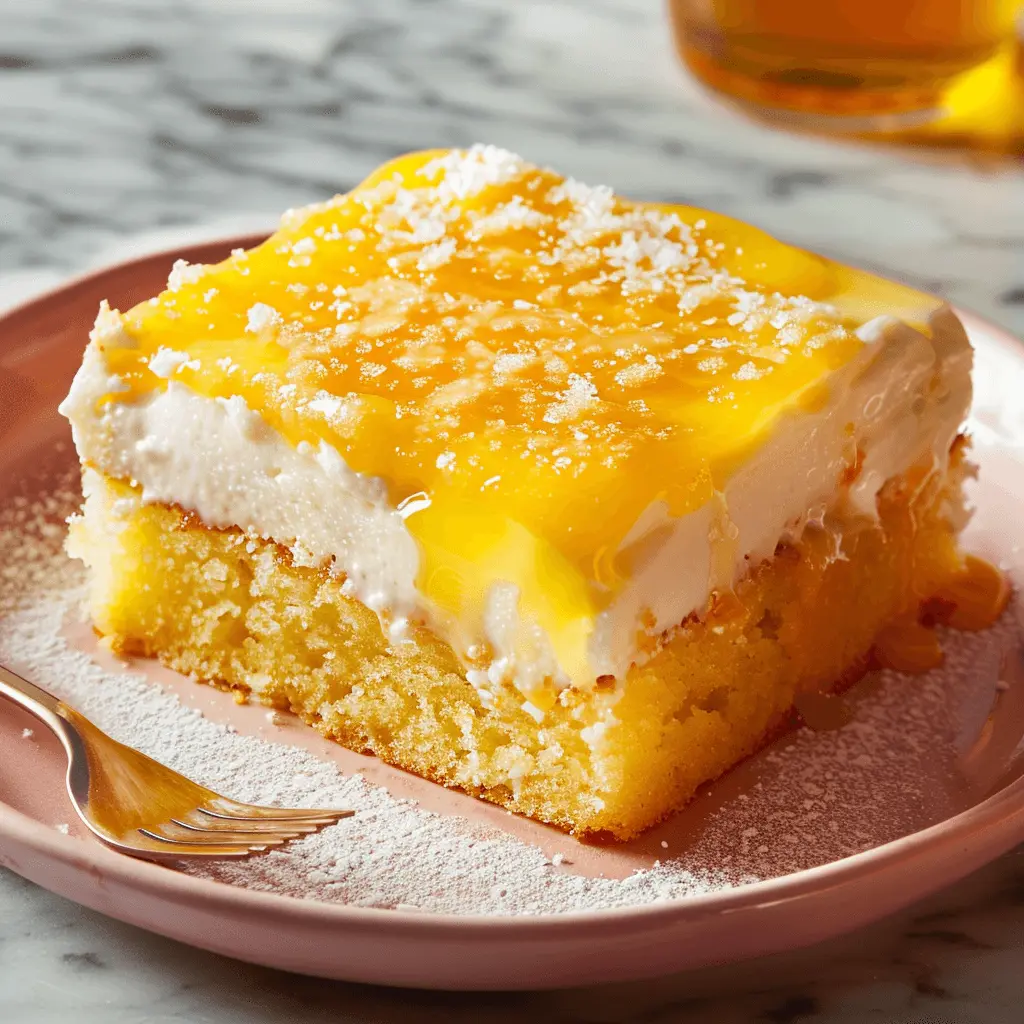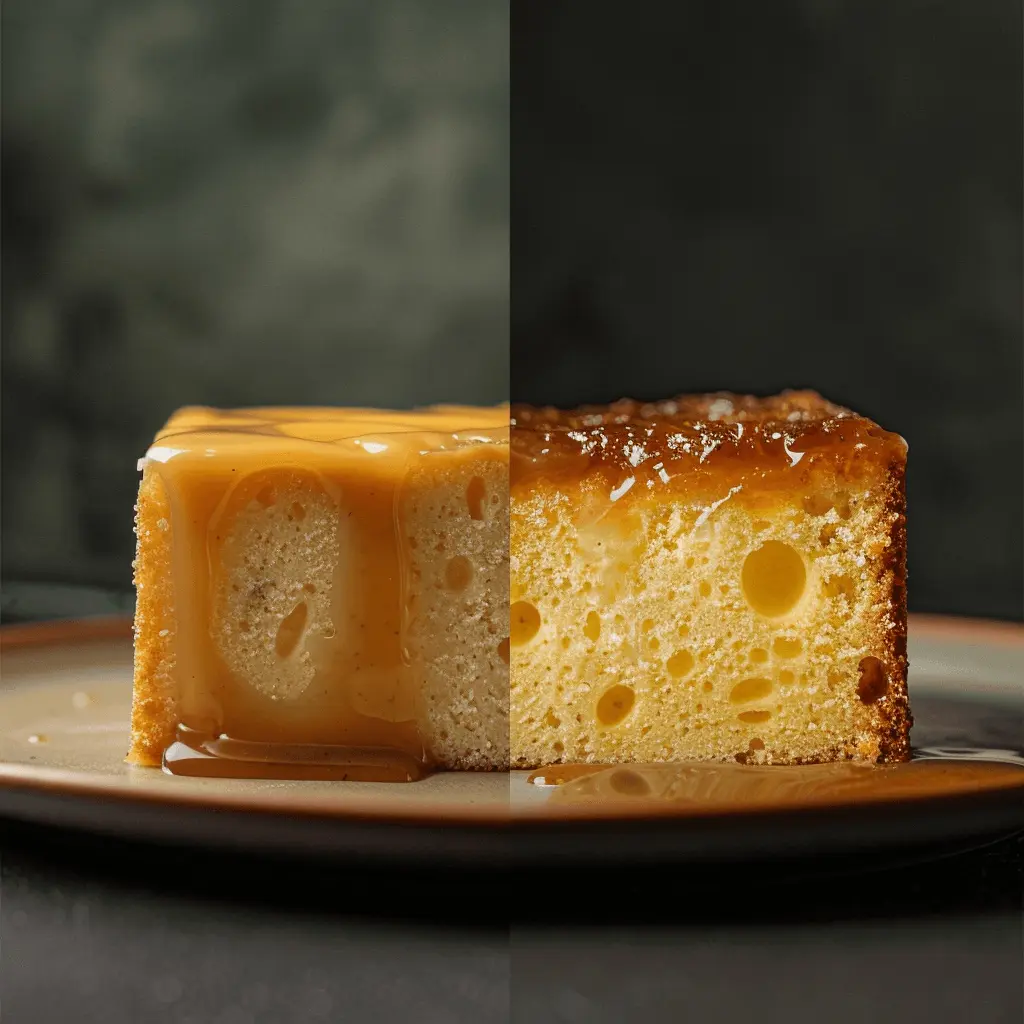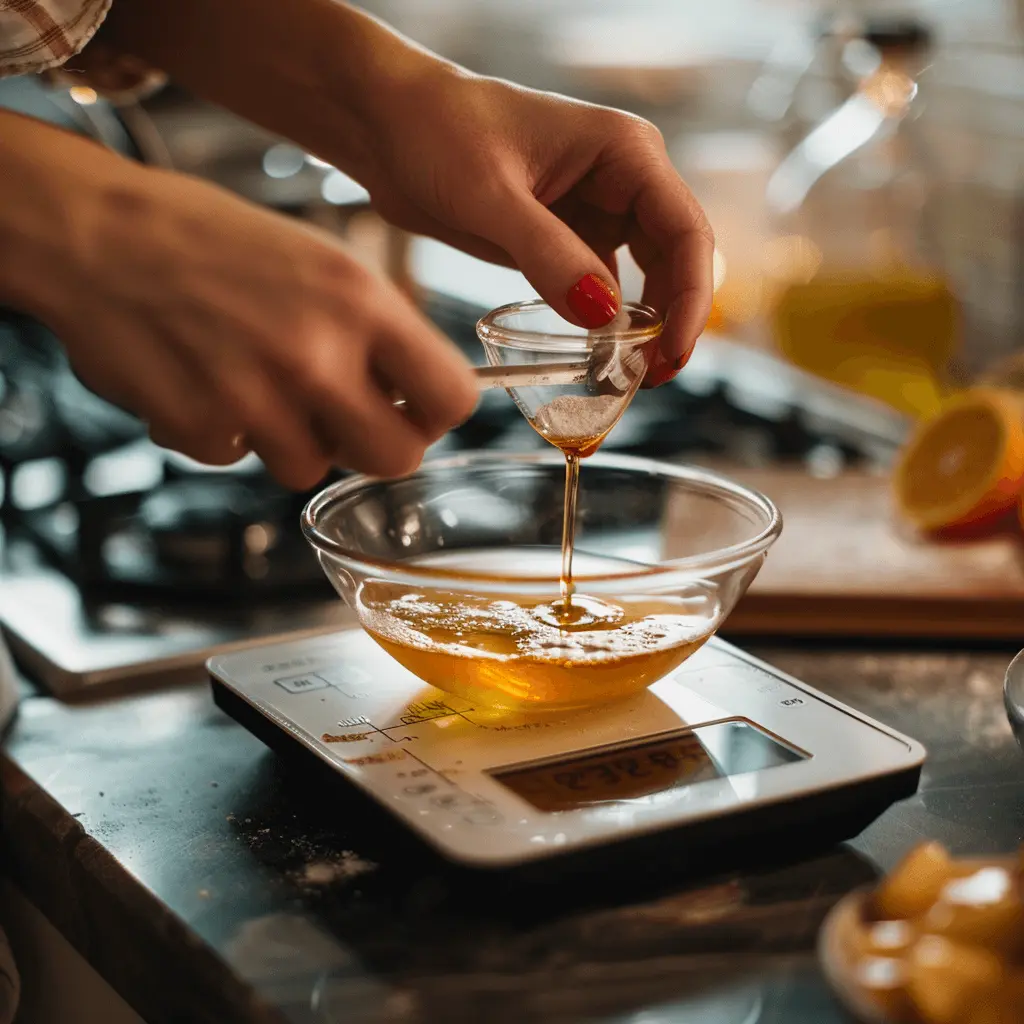Why is my poke cake soggy?
Introduction
1.1 Overview of Poke Cakes
Why is my poke cake soggy? Poke cakes, as the name implies, involve poking holes in a freshly baked cake and then soaking it with a delicious liquid. This method infuses the cake with an extra layer of flavor and moistness, making each bite a rich experience. The charm of poke cakes lies in their versatility—ranging from fruity jello infusions to decadent caramel drizzles.
1.2 Common Issues with Poke Cakes
Despite their simplicity, making the perfect poke cake can be a bit of a juggling act. The most frequent issue bakers face is how easily a poke cake can go from delightfully moist to disappointingly soggy. Understanding the why and how behind this common mishap is crucial in preventing a dessert disaster. Armed with the right techniques and knowledge, you can ensure your poke cake remains the star of the dessert table, boasting the perfect balance of moisture and texture.
ALSO READ : Butter Pecan Praline Poke Cake

Understanding the Basics of Poke Cakes
2.1 What Makes a Poke Cake?
At its core, a poke cake begins as a simple, standard cake—be it vanilla, chocolate, or any flavor you fancy. The magic happens post-baking when the cake is still warm and welcoming. At this stage, holes are poked across its surface, usually with the end of a wooden spoon or a similar object, creating avenues for the liquid to seep through and permeate the cake layers. This technique not only enhances the cake’s flavor but also introduces a delightful moistness that is the hallmark of a good poke cake.
2.2 The Role of Liquid Ingredients
The choice of liquid can vary widely from thin syrups to thick sauces, each adding their unique twist to the final dessert. Common choices include fruit-flavored gelatins, sweetened condensed milk, and creamy puddings, each offering a different level of sweetness and texture. The liquid is poured over the cake immediately after poking, allowing it to fill the holes and soak into the surrounding crumb. The right amount of liquid, when absorbed properly, makes the cake tantalizingly moist without tipping it into sogginess.
In essence, the successful baking of a poke cake hinges on a delicate balance. It’s about knowing your ingredients and how they interact within the cake’s ecosystem. The process is simple yet intricate, requiring a keen eye and a bit of baking intuition to ensure the dessert comes out as intended.
Main Reasons Why Poke Cakes Can Become Soggy

3.1 Overuse of Liquid Ingredients
One of the cardinal mistakes in poke cake preparation is the overuse of liquid ingredients. While it might seem that more liquid would make the cake more flavorful and moist, there’s a fine line between moist and mushy. If the liquid quantity exceeds the cake’s capacity to absorb, it pools at the bottom or between layers, creating a soggy mess. It’s crucial to measure your liquids precisely and adjust according to the cake’s density and the type of liquid used.
3.2 Timing of Liquid Application
Timing is everything, especially when it comes to pouring your chosen liquid over the cake. Pouring too soon, while the cake is too hot, can lead to uneven absorption, where the liquid simply runs through the holes and pools at the bottom. On the other hand, waiting too long might result in a crust forming on the top of the cake, preventing the liquid from seeping in effectively. The optimal time is when the cake is warm but not hot, allowing for maximum absorption without the liquid bypassing the crumb.
3.3 Type of Liquid Used
The type of liquid you choose also plays a pivotal role in the final texture of your poke cake. Thicker liquids, like pudding or condensed milk, tend to be absorbed more slowly, reducing the risk of sogginess. Thinner liquids, such as fruit juice or syrup, can quickly saturate the cake, especially if not administered carefully. Selecting the right type of liquid based on the cake’s texture and the desired final moisture level is key to avoiding a soggy outcome.
By understanding these elements—quantity, timing, and type of liquid—you can troubleshoot common pitfalls in poke cake preparation. This knowledge not only prevents common mistakes but also enhances your ability to experiment with different flavors and textures, pushing the boundaries of what a poke cake can be.
Tips to Prevent Soggy Poke Cakes

4.1 Proper Measurement of Ingredients
One of the surest ways to prevent a soggy poke cake is to start with the basics: precise measurement of ingredients. A well-balanced recipe is crucial, as the correct ratio of dry to wet ingredients ensures that the cake structure can support the added moisture without collapsing or becoming too wet. Using a kitchen scale to measure ingredients can help achieve this balance and is particularly important for the liquid components that will be soaked into the cake.
4.2 Choosing the Right Ingredients
Choosing the right types of liquids for your poke cake can make all the difference. For a less soggy outcome, opt for thicker, creamier liquids such as puddings or condensed milk, which tend to be absorbed more slowly and evenly. These ingredients not only add a rich flavor but also help maintain the cake’s structure. If you prefer to use thinner liquids like fruit juices or syrups, consider reducing the amount or thickening them slightly with a starch to help control absorption.
4.3 Best Practices for Pouring Techniques
The technique used to pour the liquid over your poke cake also impacts how well it is absorbed. Instead of pouring all the liquid at once, try drizzling it gradually, giving the cake time to absorb each addition before more is added. This method helps prevent the liquid from overwhelming the cake’s structure and pooling at the bottom. For even distribution, use the back of a spoon to gently push the liquid into the holes, ensuring that every part of the cake gets an equal share of the moisture.
By meticulously measuring ingredients, selecting appropriate liquids, and employing careful pouring techniques, you can master the art of making a moist poke cake that retains its structure without becoming soggy. These steps are not just about following a recipe—they’re about understanding the science behind each component and its effect on the cake’s texture and integrity.
ALSO READ: What is the difference between butter pecan and pecan praline?
Advanced Tips and Troubleshooting
5.1 Adjusting Recipes for Different Cake Types
Different cake bases can absorb liquids at varying rates, which means adjustments may be necessary depending on whether you’re working with a sponge cake, a butter cake, or any other type. Sponge cakes, known for their airy and porous structure, can handle more liquid compared to denser butter cakes. When using a denser cake base, consider reducing the liquid or choosing a thicker liquid to prevent sogginess. Experimenting with the base recipe can lead to better outcomes, adapting the technique to suit the specific characteristics of the cake.
5.2 Dealing with Unexpected Sogginess
Even with all precautions, sometimes a poke cake might still turn out soggier than expected. If you find yourself in this situation, there are a few tricks to salvage the dessert. One method is to chill the cake, which can help firm up the structure and make it less soggy. Alternatively, adding a layer of whipped cream or a light frosting can help balance out the moisture and improve the cake’s texture. These toppings can act as a barrier, preventing further absorption of any residual liquid on the surface.
Advanced troubleshooting involves not only understanding what went wrong but also how to fix it without starting from scratch. By adapting your approach based on the cake’s response to liquids and employing quick fixes, you can turn a potentially ruined dessert into a deliciously salvaged creation. These tips not only enhance your baking skills but also equip you with the knowledge to handle unexpected baking challenges with confidence and creativity.
FAQs
6.1 What is the best time to pour liquid into a poke cake?
The ideal time to pour liquid over a poke cake is when it is warm but not hot. This allows the cake to absorb the liquid evenly without it running straight through to the bottom or causing the cake to become overly moist. Pouring too soon after baking can result in uneven distribution, while waiting until the cake is completely cool might prevent the liquid from soaking in effectively.
6.2 Can I make a poke cake less soggy without changing the recipe much?
Absolutely! Minor tweaks can significantly impact the final texture of your poke cake. Consider reducing the amount of liquid slightly or thickening it with a small amount of cornstarch to prevent over-saturation. Also, focus on the pouring technique—adding the liquid slowly and evenly can prevent it from overwhelming the cake.
6.3 What are the best liquids to use for different types of poke cakes?
The best liquid for your poke cake depends on the desired flavor and the cake’s texture. For lighter, fluffier cakes like sponge cakes, thin syrups or sweetened fruit juices work well as they soak in easily without weighing down the cake. For denser cakes, thicker liquids like condensed milk or pudding are preferable as they provide moisture without causing sogginess. Experimenting with different liquids can lead to delightful flavor combinations and textures suited to your personal preference.
Conclusion
In the sweet journey of baking poke cakes, knowing the finer details of preparation and problem-solving can transform a good dessert into a great one. From understanding the delicate balance of moisture to choosing the right liquid for the cake type, each element plays a pivotal role in achieving the perfect poke cake. The joy of baking lies not just in following a recipe but in mastering the art of adaptation and innovation.
Remember, the success of your poke cake doesn’t just hinge on the recipe; it’s also about the techniques you employ and your understanding of how different ingredients interact within your dessert. Whether you’re a novice baker or a seasoned pastry chef, the tips and tricks outlined in this article will help you avoid the pitfalls of sogginess and guide you towards creating consistently delicious poke cakes.
